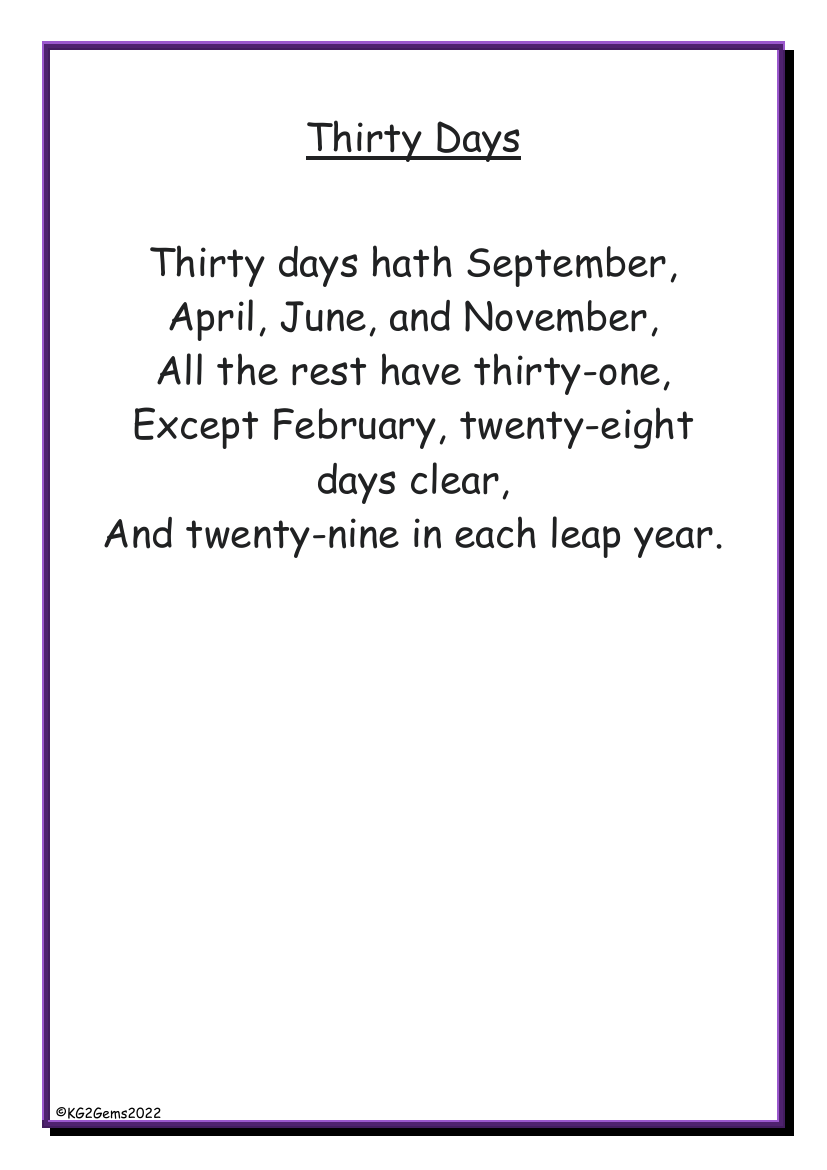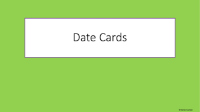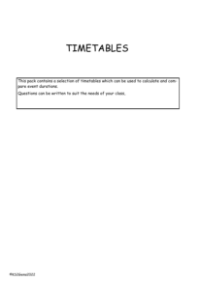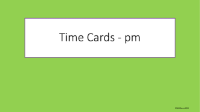Thirty Days Poem

Maths Resource Description
The "Thirty Days" poem is a traditional verse that serves as a mnemonic device to help remember the number of days in each month of the year. It begins by stating, "Thirty days hath September, April, June, and November," which immediately informs the reader that these four months share the characteristic of being thirty days long. The poem continues with a simple rhyme that covers the rest of the months, saying, "All the rest have thirty-one," thus indicating that the remaining months, with the exception of one, consist of thirty-one days.
The poem then addresses the unique case of February, which deviates from the pattern established by the other months. It states, "Except February, twenty-eight days clear," highlighting that February typically has twenty-eight days. However, the poem does not end there; it goes on to mention the occurrence of leap years with the line, "And twenty-nine in each leap year." This addition serves to remind the reader that every four years, February gains an extra day, making it twenty-nine days long in a leap year. The rhyme and rhythm of the poem make it an effective and easy-to-remember guide to the calendar year.




















